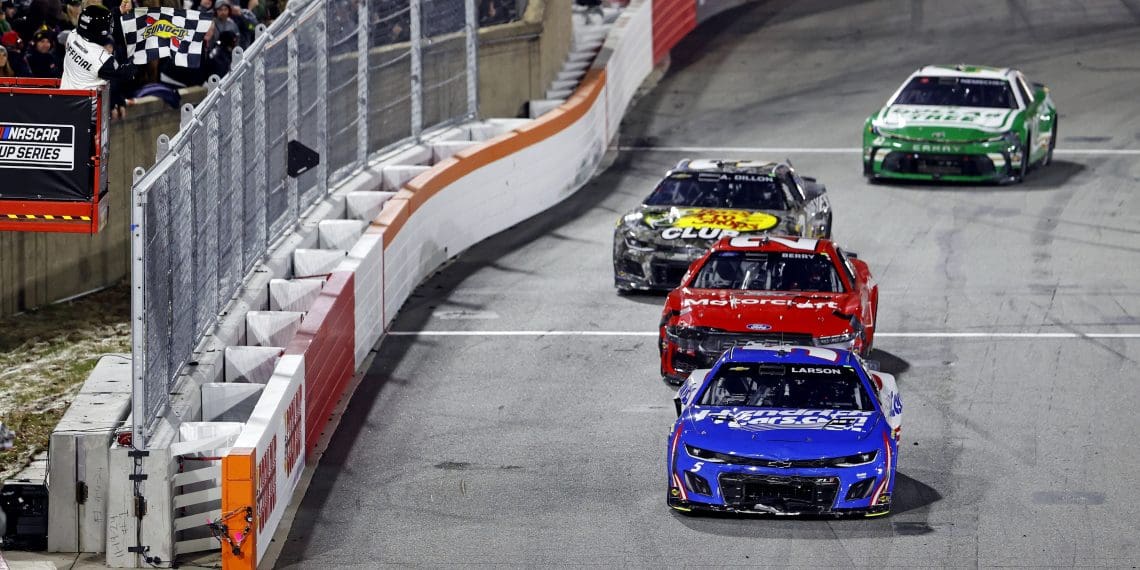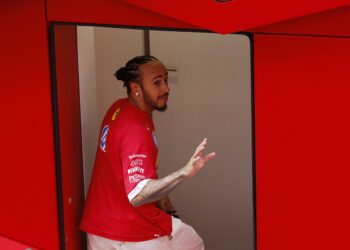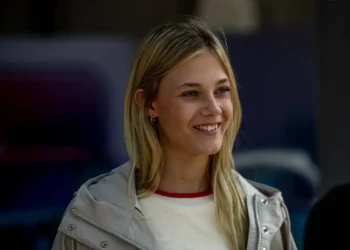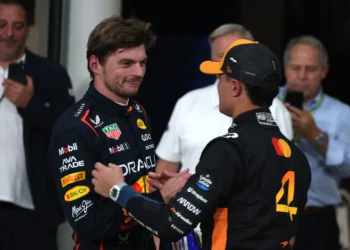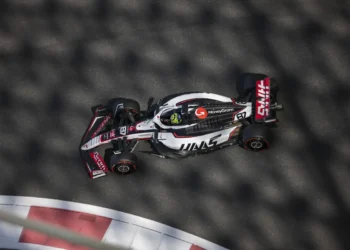For a 2021 NASCAR Cup Series Champion and a top favorite heading into the 2025 season, Kyle Larson’s performance at the Cook Out Clash was a shocker. After three strong runs in Los Angeles, where he consistently finished in the top five, the transition to Bowman Gray’s bullring turned into a frustrating battle for survival.
Despite showing early promise, Larson’s weekend unraveled quickly, leaving him in 17th place—a result that even Denny Hamlin couldn’t quite wrap his head around.
From Strong Start to Fight for Survival
Larson’s Saturday began with optimism, as he clocked the fourth-fastest time in the first practice session. But as the track rubbered in and speeds increased, his No. 5 Chevrolet began to fall behind.
📉 Second Practice: Larson dropped to 22nd on the speed charts.
🚨 Qualifying: His struggles continued, and he found himself outside a locked-in spot for Sunday’s feature race.
🔥 Heat Race: Starting sixth, Larson needed just one position to transfer automatically—but he slipped to eighth, sending him to the dreaded Last-Chance Qualifier (LCQ).
With only two transfer spots available, Larson and crew chief Cliff Daniels made last-ditch adjustments, knowing an aggressive drive was the only way forward.
Last-Chance Qualifier—A Desperate Fight
The LCQ turned into a chaotic melee, and Larson knew he had to muscle his way through.
Denny Hamlin, breaking down Larson’s drive on his Actions Detrimental podcast, was impressed by how aggressively Larson held his ground early:
“I thought that it was super aggressive early. When he had Ty Dillon up there and there was Erik Jones up there and they were going at it, it was super messy early. I thought Larson did a great job holding the bottom.”
As cars crashed out ahead of him, Larson picked his way through the carnage, ultimately winning the LCQ and securing a spot in the main event. But the battle had already taken its toll on his car.
Main Event Disaster—Spins, Damage, and No Comeback
Starting in 21st for the Clash, Larson had a long road ahead.
⏳ Lap 100 Break: He had climbed to 14th, showing some resilience.
🚨 Lap 102: Larson and Chase Briscoe tangled, sending them both spinning.
🛑 The Final 98 Laps: Larson never recovered, unable to regain momentum, ultimately finishing 17th.
Hamlin, analyzing the race, was perplexed by how Larson faded in the second half:
“I thought when I looked at his car in that race, generally speaking, there wasn’t anyone close to him on speed… I didn’t know I saw him spun out a couple times. Too much damage to his car, maybe? Yeah, I mean, you would think so.”
Even after his early setbacks, Hamlin believed Larson had enough speed to make up ground—but it never materialized.
“His car was destroyed and still had speed at the end of the LCQ… Surprisingly, he didn’t make more headway.”
For a driver of Larson’s caliber, a 17th-place finish at the Clash was a bitter pill to swallow—especially considering his stellar record at the L.A. Coliseum in previous years.
A Rough Night for a Championship Favorite
Kyle Larson isn’t used to mid-pack results, especially in exhibition races where his raw talent usually shines.
The Bowman Gray Clash was a wake-up call, reminding everyone that not all short tracks are created equal—and even NASCAR’s best can struggle when conditions don’t go their way.
Was this just a one-off disaster, or is it a warning sign that 2025 won’t be as smooth as expected for the No. 5 team?
One thing’s certain—Larson will be looking for redemption at Daytona.

